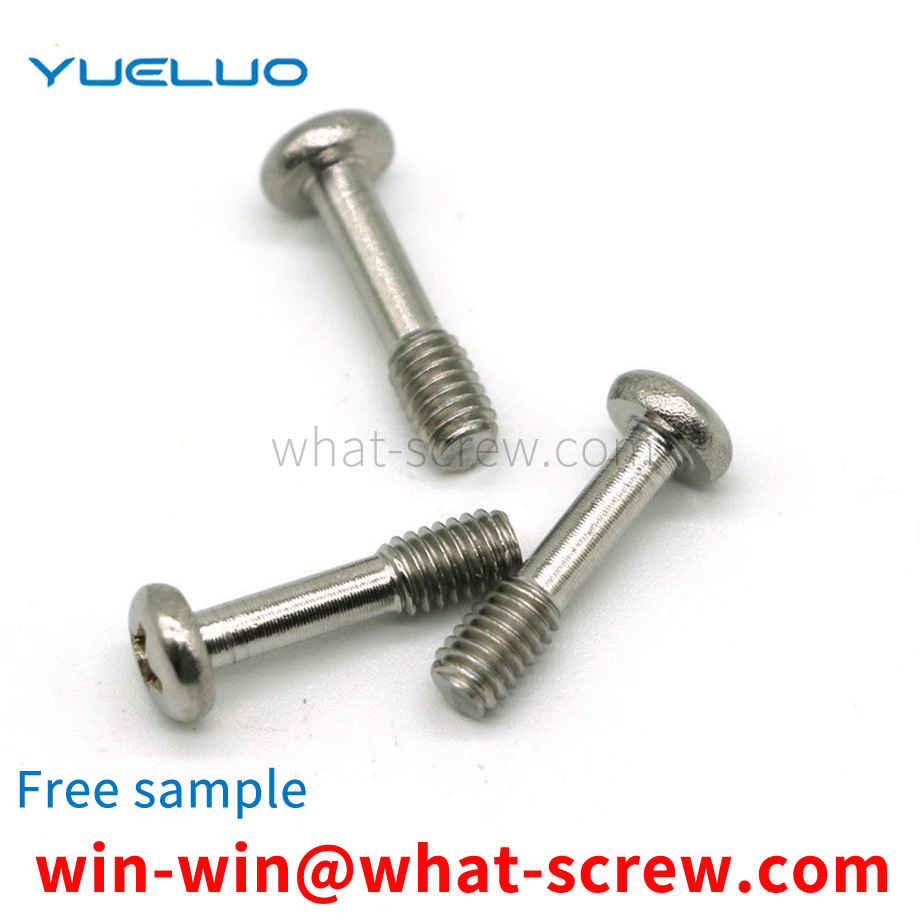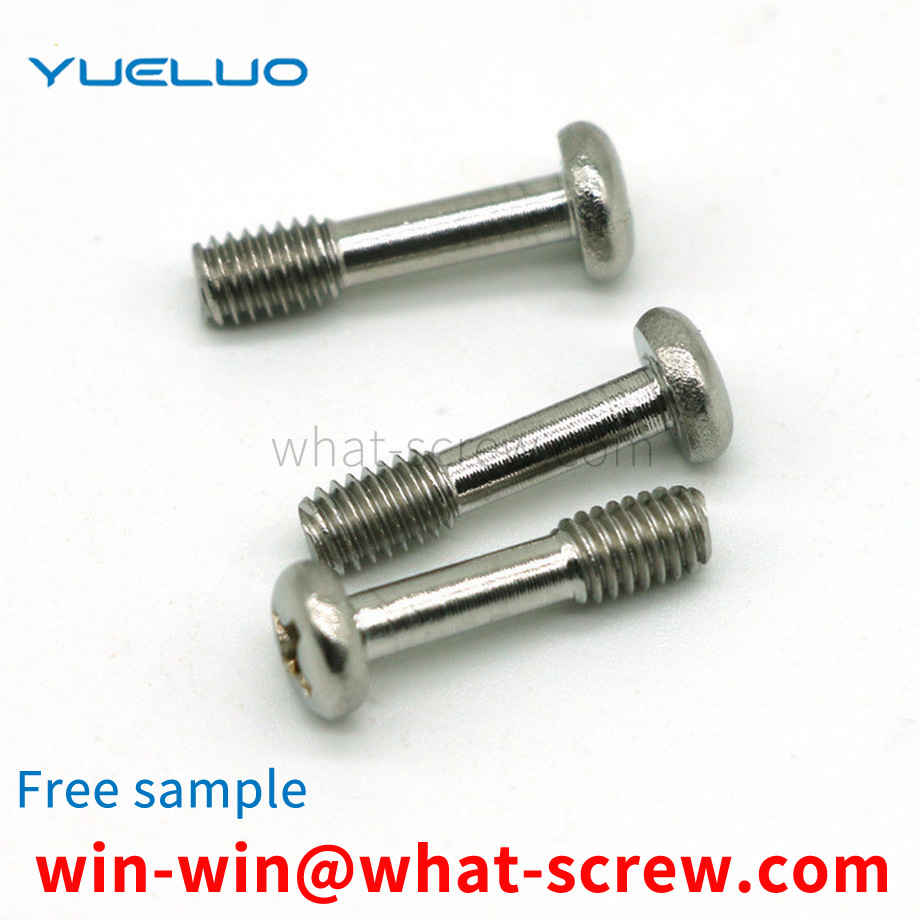Standard introduction Standard code name Material coating GB/T65-2000 slotted cylindrical head screw steel, stainless steel galvanized passivated or untreated GB/T67-2000 slotted pan head screw steel, stainless steel galvanized passivated or not Treated GB/T68-2000 slotted countersunk head screw steel, stainless steel galvanized passivated or untreated GB/T70.1-2008 hexagon socket head screw steel, stainless steel galvanized passivated or untreated GB/T70 .2-2008 Hexagon socket head screw steel, stainless steel galvanized passivated or untreated GB/T70.3-2000 Hexagon socket head countersunk head screw steel, stainless steel galvanized passivated or untreated GB/T71-1985 Open Slotted taper end set screw steel, stainless steel galvanized passivated or untreated GB/T73-1985 slotted flat end set screw steel, stainless steel galvanized passivated or untreated GB/T74-1985 slotted concave end set screw Screw steel, stainless steel galvanized passivated or untreated GB/T75-1985 slotted long cylindrical end set screw steel, stainless steel galvanized passivated or untreated GB/T77-2000 hexagon socket flat end set screw steel, stainless steel Galvanized passivated or untreated GB/T78-2007 Hexagon socket set screw steel, stainless steel galvanized passivated or untreated GB/T79- 2000 Hexagon socket set screw steel, stainless steel galvanized passivated Or untreated GB/T80-2007 Hexagon socket set screw steel, stainless steel galvanized passivated or untreated GB/T818-2000 Cross recessed pan head screw steel, stainless steel galvanized passivated or untreated GB/ T819.1- 2000 Cross recessed countersunk head screw steel 4.8 grade steel galvanized passivation GB/T819.2- 1997 Cross recessed countersunk head screw steel, stainless steel A2-70, non-ferrous metal CU2 or CU3 steel, stainless steel or non-ferrous metal plated Zinc passivated or untreated GB/T820- 2000 Cross recessed half countersunk head screw steel, stainless steel galvanized passivated or untreated GB/T822- 2000 Cross recessed cylinder head screw steel, stainless steel galvanized passivated or untreated Treated GB/T823-1988 cross recessed small pan head screw steel, stainless steel galvanized passivated or untreated GB/T833-1988 slotted large cylindrical head screw steel, stainless steel galvanized passivated or untreated GB/ T837- 1988 Slotted pan head non-prolapse screw steel, stainless steel galvanized passivated or untreated GB/T838- 1988 Hexagon head non-prolapse screw steel, stainless steel galvanized passivated or untreated GB/T2671.1- 2004 Hexagon socket head low cylindrical head screw GB/T2671.2-2004 Hexagon socket head screw GB/T2672-2004 Hexagon socket head pan head screw steel galvanized passivation GB/T2673-1986 Hexagon socket countersunk head screw steel plated Zinc passivation GB/T13806.1-1992 Fasteners for precision machinery ten Slotted Screws Steel, Copper: H68 or HP59-1 Zinc Passivated or Untreated
Guangdong Yueluo Hardware Industry Co., Ltd. discloses an eccentric special-shaped rivet, which has a simple structure and is inexpensive to manufacture. The eccentric shaped rivet includes a cylindrical head and an eccentric polished rod. The diameter of the cylindrical head is larger than that of the eccentric polished rod. The eccentric polished rod is arranged at the lower end of the cylindrical head, and the axis of the eccentric polished rod is not the same as the axis of the cylindrical head. on the same straight line. The eccentric special-shaped rivet has low manufacturing cost and is easy to realize automatic assembly.
In the automobile industry, it is often necessary to install bolts at the opening of a closed cavity to fix and connect other parts. However, the diameter of the opening of the closed cavity is often larger than that of the head of the bolt, so it is necessary to set a strip-shaped spacer on the head of the bolt, so that the spacer can penetrate the opening longitudinally, and then block the opening horizontally, so as to be stuck with an upside-down buckle. Bolt head. However, since the bolt body of the bolt has a certain length, the manual vertical and horizontal turning operation after the strip spacer penetrates the opening is very difficult, and it is easy to drop the bolt and the spacer into the airtight cavity together, which greatly increases the assembly time. Increased labor costs.
High-strength bolt connection has the advantages of simple construction, good mechanical performance, disassembly and replacement, fatigue resistance, and no loosening under dynamic load. It is a promising connection method. High-strength bolts use a special wrench to tighten the nut, so that the bolt generates a huge and controlled pre-tension. Under the action of pre-pressure, a large frictional force will be generated along the surface of the connected parts. Obviously, as long as the axial force is less than this frictional force, the components will not slip and the connection will not be damaged. This is the high-strength bolt connection. principle. High-strength bolted connections rely on the friction between the contact surfaces of the connectors to prevent them from sliding each other. In order to make the contact surfaces have sufficient friction, it is necessary to increase the clamping force of the components and increase the friction coefficient of the contact surfaces of the components. The clamping force between the components is achieved by applying pretension to the bolts, so the bolts must be made of high-strength steel, which is why it is called high-strength bolted connections. In high-strength bolted connections, the friction coefficient has a great influence on the bearing capacity. Tests show that the coefficient of friction is mainly affected by the form of the contact surface and the material of the components. In order to increase the friction coefficient of the contact surface, methods such as sandblasting and wire brush cleaning are often used to treat the contact surface of the components within the connection range during construction.
The hexagonal nut is used in conjunction with screws, bolts and screws to connect and fasten parts. Among them, the Type 1 six-purpose nut is the most widely used. The C-level nut is used for machines, equipment or structures with rough surface and low precision requirements; A-level and B-level nuts are used for relatively smooth surfaces and high precision requirements. machine, equipment or structure. The thickness M of the type 2 hexagon nut is thicker, and it is mostly used in occasions where assembly and disassembly are often required. The thickness M of the hexagonal thin nut is relatively thin, and it is mostly used in situations where the surface space of the connected parts is limited.
We have many years of experience in the production and sales of screws, nuts, flat washers, etc. The main products are: built-in hexagonal expansion bolts, large cap pull rivets, percussion flat cap GB109 Liuding flat bottom isolation column rivets, 304 pins and other products, we We can provide you with the right fastener solution for you.



















 Service Hotline
Service Hotline




